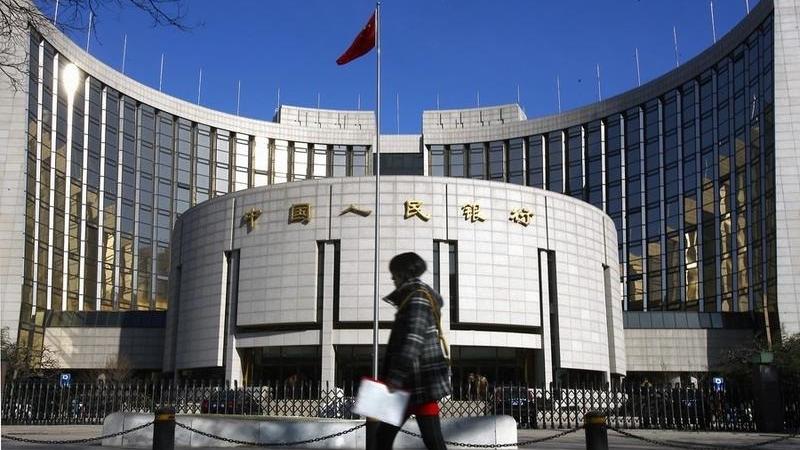 A file photo shows a pedestrian walking past the headquarters building of the People's Bank of China in Beijing, capital of China. (WAN XIANG / XINHUA)
A file photo shows a pedestrian walking past the headquarters building of the People's Bank of China in Beijing, capital of China. (WAN XIANG / XINHUA)
BEIJING — The latest decline in China's benchmark lending rates -- the first drop in 10 months -- has signaled the approach of stepped-up policies to bolster economic recovery as analysts voice confidence in the country's growth outlook.
The one-year loan prime rate (LPR) and the over-five-year LPR, China's market-based benchmark lending rates, were lowered by 10 basis points on Tuesday, according to the National Interbank Funding Center.
The NDRC will roll out policies to recover and expand consumption in a timely manner, unleash potential in services consumption and stabilize auto consumption, according to NDRC spokesperson Meng Wei
The LPR is a pricing reference rate for banks, and it is based on the open market operations rates of the People's Bank of China (PBOC), the country's central bank. The PBOC had cut several policy rates before Tuesday's LPR drop, including the seven-day reverse repo rate and the medium-term lending facility rate.
READ MORE: GDP growth stronger than expected
The lower rates are widely believed to reflect the country's intention to strengthen counter-cyclical adjustment and stabilize market expectations.
"The decline in the LPR will help stabilize growth, reduce costs and boost confidence," said Wen Bin, chief economist of China Minsheng Bank, noting that he expects more pro-growth policies to be introduced in the future.
Lowering financing costs was part of a slew of tasks designated by the National Development and Reform Commission (NDRC) and three other departments last week to bring down the costs of businesses this year.
The property sector, which saw slower home price growth in May, is expected to benefit from the lower five-year LPR, on which many lenders base their mortgage rates.
With the LPR decrease, residents' mortgage payment burdens will be reduced, which will help boost consumption and investment, thus bringing a rush of positive feedback to expand domestic demand and boost the economy, Wen noted.
The fall in lending benchmarks came as authorities pledged to ramp up policy support to tackle economic headwinds, including a complicated and harsh external environment and sluggish global trade and investment.
In response to the changing economic landscape, introducing policies that are more effective is imperative, according to the State Council executive meeting held on Friday.
The meeting put forward a series of measures to improve the intensity of macro-control, expand effective demand, strengthen and optimize the real economy, and prevent and resolve risks in key fields.
The NDRC will roll out policies to recover and expand consumption in a timely manner, unleash potential in services consumption and stabilize auto consumption, according to NDRC spokesperson Meng Wei.
More policies targeting expanded investment and stabilized employment will also be launched, including policies to expedite the construction of new and major infrastructure projects and expand employment channels for college graduates and other key groups, Meng noted.
With strengthened policy moves on the way, it is believed that the Chinese economy will sustain its resilience despite multiple challenges.
READ MORE: Tang: ‘Stability’ the key word in nation’s economic growth
The momentum of economic recovery in the third quarter will strengthen, said Wang Qing, an analyst at Golden Credit Rating, predicting that China's annual gross domestic product (GDP) growth rate will reach about 6 percent.
China aims to expand its economy by 5 percent in 2023, according to this year's government work report. The country's GDP grew 4.5 percent year on year to 28.5 trillion yuan (about $3.97 trillion) in the first quarter of 2023, data from the National Bureau of Statistics shows.
In its China Economic Update last Wednesday, the World Bank maintained its China growth forecast at 5.6 percent for 2023, led by a rebound in consumer demand.


